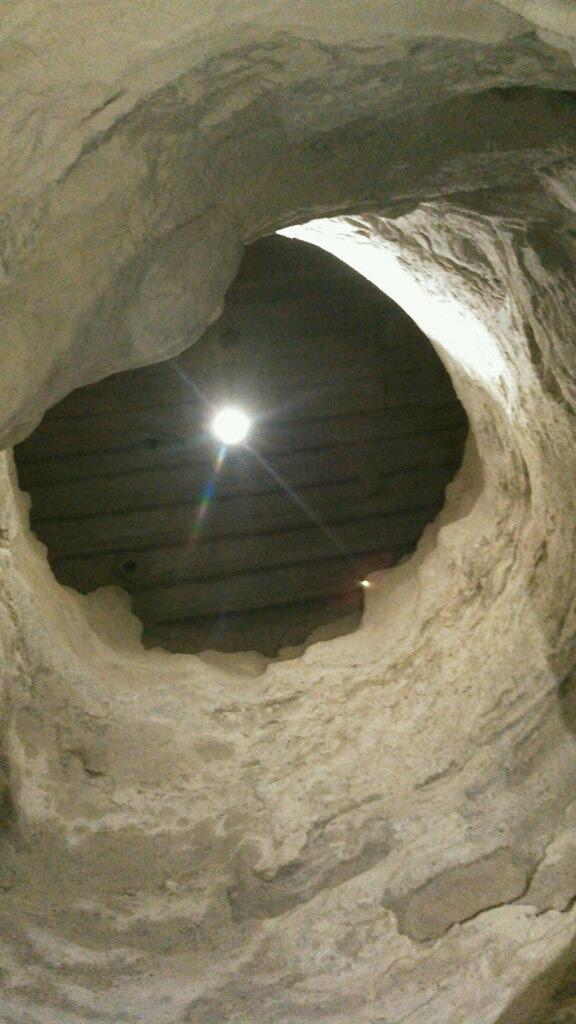Concrete stave silos are reinforced with exterior, galvanized steel hoops, which help compress the walls and provide necessary tension for structural integrity. The concrete staves act to distribute the load of the material over the hoops.
The hoops are the primary structural stabilizer of the silo and for this reason; it’s essential to inspect the condition of the exterior hoops, as they are vital to the health and safety of the silo. The exterior hoops shouldn’t be bent, broken, falling off, or lying on the ground. It’s also important to make sure the hoops aren’t heavily corroded. Hoops are bolted together with a lug, which can lead to issues if it begins to corrode. The hoops are tensioned to a specific rating and pressure, so it’s essential that the hoop has not been welded to and stands independently.
Since stave silo construction utilizes steel galvanized hoops for structural integrity of the bulk storage system, failure to protect these hoops properly will shorten the designed stability of the entire system. A cementitious silo coating is ideal on concrete stave silos, protecting the steel galvanized hoops and preventing leakage. These bonding and waterproofing agents seal the joints between the staves and add a level of corrosion protection to the exterior steel hoops, ensuring long lasting defense against corrosive elements and deterioration.
One recent case study examines a concrete stave silo with rusted and broken hoops, showing further evidence that failing to inspect your silo regularly will put your silo’s structural integrity, operability, and safety in jeopardy and require costly repairs in the future.
To learn more, be sure to check out our full library of silo inspection videos on silo maintenance, inspection and repair on ![]()
 Just as routine silo inspections are an essential component of your maintenance program, so too are routine cleanings. Regularly cleaning your silo can help keep it operating efficiently and limit potential liabilities. Regular cleanings also increase your silo’s usable lifespan, minimize big ticket repairs, and avoid more costly cleaning expenses. Silos that are emptied regularly and refilled will not have the same buildup issues as silos that are kept topped off, but every silo can benefit from a regular cleaning schedule.
Just as routine silo inspections are an essential component of your maintenance program, so too are routine cleanings. Regularly cleaning your silo can help keep it operating efficiently and limit potential liabilities. Regular cleanings also increase your silo’s usable lifespan, minimize big ticket repairs, and avoid more costly cleaning expenses. Silos that are emptied regularly and refilled will not have the same buildup issues as silos that are kept topped off, but every silo can benefit from a regular cleaning schedule.
Cleaning your silo can save you money in several ways. The primary savings are in recovering stagnant material that has built up inside your silo. This prevents losing that material and the resources — time, energy, labor — that went into storing it. Depending on your material, cleaning also can help prevent degradation or contamination that occurs when material sits too long, thus reducing or destroying its value.
Routine cleaning is necessary to remove the residue buildup inside the silo that reduces the volume of new material that the filled silo can hold. In all silos, cleaning removes old material residue which, in turn, helps maintain the freshness and concentration of the newly introduced material. Every silo, no matter the design or whether it’s steel or concrete, will benefit from a regular cleaning schedule. The benefits of a professional cleaning every year far outweigh the initial costs as this maintenance step keeps your silo running at full capacity, allowing maximum efficiency and leading to more consistent production schedules with no unplanned downtime.
Routine cleaning prolongs the life of your silo. Find out more on how to keep your silo clean and why it’s important to have your silo cleaned.
To learn more, be sure to check out our full library of videos on silo cleaning, construction, inspection and repair on  .
.
Construction, cone angles, and the type of stored material are all factors that influence how material moves through storage silos.
Funnel Flow
Funnel flow silos are usually more cost effective to construct, costing between 20-30% less than mass flow silos, but are not suitable for all materials.

The flow channel drains material in the middle first. As the silo empties, side material flows into the middle channel. Because of this flow pattern, funnel flow silos that are not emptied completely on a regular basis keep stagnant, or dead, material against the silos walls. Without scheduled emptying, this causes material to build up along the silos walls and leads to issues like ratholing or irregular flow.
Taken together, these factors can enhance particle segregation, limit your live capacity, and cause silo failure. Generally, a funnel flow pattern is only suitable for coarse, free flowing, non-degrading solids when segregation is minimal.
Learn more about Funnel Flow Silos.
Mass Flow
Mass flow silos do not experience the same material flow issues as funnel flow silos. Stored materials move down the silo as a column, with no flow channels and the first materials in are the first materials out, providing for a uniform flow.

Mass flow is ideal for materials that are susceptible to segregation based on particle size or density, minimized by the first in, first out flow sequence, with the segregated particles remixing as they discharge. It is an ideal flow pattern for coal or other materials that are combustible or perishable.
Learn more about Mass Flow Silos.
Funnel flow and mass flow are common silo flow patterns. In addition to these two are expanded flow and fluidized flow patterns. Find out more about the different types of concrete silo flow patterns.
To learn more, be sure to check out our full library of videos on silo maintenance, inspection and repair on 







